-
 Conflict in Asia began well before the official start of World War II. Seeking raw materials to fuel its growing industries, Japan invaded the Chinese province of Manchuria in 1931. By 1937 Japan controlled large sections of China, and war crimes against the Chinese became commonplace. In 1939, the armies of Japan and the Soviet Union clashed in the area of the Khalkin Gol river in Manchuria. This battle lasted four months and resulted in a defeat for the Japanese.
Conflict in Asia began well before the official start of World War II. Seeking raw materials to fuel its growing industries, Japan invaded the Chinese province of Manchuria in 1931. By 1937 Japan controlled large sections of China, and war crimes against the Chinese became commonplace. In 1939, the armies of Japan and the Soviet Union clashed in the area of the Khalkin Gol river in Manchuria. This battle lasted four months and resulted in a defeat for the Japanese. -
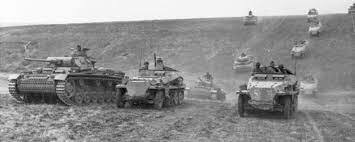 "Blitzkrieg," a German word meaning “Lightning War,” was Germany’s strategy to avoid a long war in the first phase of World War II in Europe. Germany's strategy was to defeat its opponents in a series of short campaigns.
"Blitzkrieg," a German word meaning “Lightning War,” was Germany’s strategy to avoid a long war in the first phase of World War II in Europe. Germany's strategy was to defeat its opponents in a series of short campaigns. -
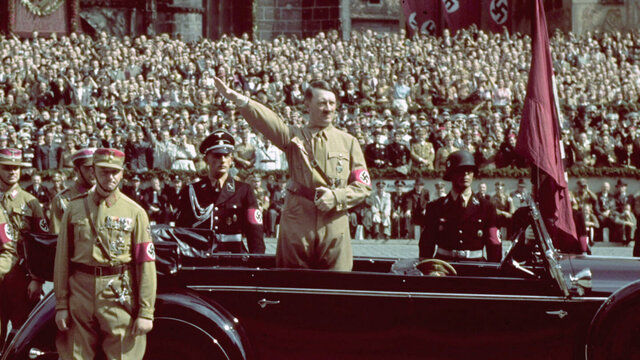 The Molotov-Ribbentrop Pact was a non-aggression pact signed in 1939 by Nazi Germany and the Soviet Union shortly before World War 2. With Europe on the brink of another major war, Joseph Stalin viewed the pact as a way to keep his nation on peaceful terms with Germany, while giving him time to build up the Soviet military. Hitler used the pact to make sure Germany was able to invade Poland. The Molotov-Ribbentrop Pact fell apart in June 1941, when Nazi forces invaded the Soviet Union.
The Molotov-Ribbentrop Pact was a non-aggression pact signed in 1939 by Nazi Germany and the Soviet Union shortly before World War 2. With Europe on the brink of another major war, Joseph Stalin viewed the pact as a way to keep his nation on peaceful terms with Germany, while giving him time to build up the Soviet military. Hitler used the pact to make sure Germany was able to invade Poland. The Molotov-Ribbentrop Pact fell apart in June 1941, when Nazi forces invaded the Soviet Union. -
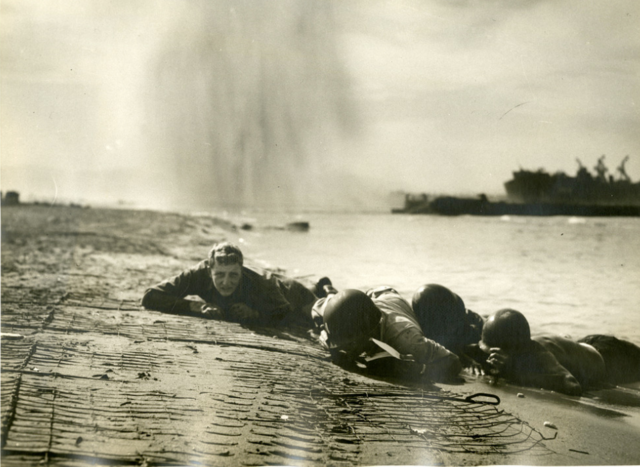 The British 8th Army under Field Marshal Bernard L. Montgomery begins the Allied invasion of the Italian peninsula, crossing the Strait of Messina from Sicily and landing at Calabria–the “toe” of Italy. On the day of the landing, the Italian government secretly agreed to the Allies’ terms for surrender, but no public announcement was made until September 8.
The British 8th Army under Field Marshal Bernard L. Montgomery begins the Allied invasion of the Italian peninsula, crossing the Strait of Messina from Sicily and landing at Calabria–the “toe” of Italy. On the day of the landing, the Italian government secretly agreed to the Allies’ terms for surrender, but no public announcement was made until September 8. -
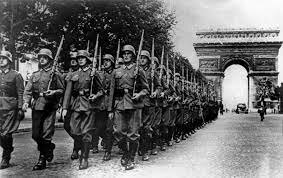 By early June 1940 Denmark, Norway, Belgium, and the Netherlands had fallen, the British had been driven into the sea, and the Germans had taken more than one million Allied prisoners in the space of three weeks. The new French front along the Somme and the Aisne was dubbed the Weygand Line. It was longer than the original Franco-Belgian frontier, while the forces available to hold it was greatly diminished in both numbers and morale.
By early June 1940 Denmark, Norway, Belgium, and the Netherlands had fallen, the British had been driven into the sea, and the Germans had taken more than one million Allied prisoners in the space of three weeks. The new French front along the Somme and the Aisne was dubbed the Weygand Line. It was longer than the original Franco-Belgian frontier, while the forces available to hold it was greatly diminished in both numbers and morale. -
 Pearl Harbor is a U.S. naval base near Honolulu, Hawaii, that was the scene of a devastating surprise attack by Japanese forces on December 7, 1941. Tons of Japanese fighter planes managed to destroy & damage nearly 20 American naval vessels, including eight battleships, and over 300 airplanes. More than 2,400 Americans died in the attack, including civilians, and another 1,000 people were wounded. The day after the assault, President Franklin D. Roosevelt asked Congress to declare war on Japan.
Pearl Harbor is a U.S. naval base near Honolulu, Hawaii, that was the scene of a devastating surprise attack by Japanese forces on December 7, 1941. Tons of Japanese fighter planes managed to destroy & damage nearly 20 American naval vessels, including eight battleships, and over 300 airplanes. More than 2,400 Americans died in the attack, including civilians, and another 1,000 people were wounded. The day after the assault, President Franklin D. Roosevelt asked Congress to declare war on Japan. -
 Reinhard Heydrich, chief of the Reich Security Main Office (RSHA), convenes the Wannsee Conference in a villa outside Berlin. At this conference, he presents plans to coordinate a European-wide “Final Solution of the Jewish Question” to key officials from the German State and the Nazi Party.
Reinhard Heydrich, chief of the Reich Security Main Office (RSHA), convenes the Wannsee Conference in a villa outside Berlin. At this conference, he presents plans to coordinate a European-wide “Final Solution of the Jewish Question” to key officials from the German State and the Nazi Party. -
 On July 24, 1943, British bombers raid Hamburg, Germany, by night in Operation Gomorrah, while Americans bombed it by day in its own “Blitz Week.” Britain had suffered the deaths of 167 civilians as a result of German bombing raids in July. Now the tables were going to turn. The evening of July 24 saw British aircraft drop 2,300 tons of incendiary bombs on Hamburg in just a few hours. More than 1,500 German civilians were killed in that first British raid.
On July 24, 1943, British bombers raid Hamburg, Germany, by night in Operation Gomorrah, while Americans bombed it by day in its own “Blitz Week.” Britain had suffered the deaths of 167 civilians as a result of German bombing raids in July. Now the tables were going to turn. The evening of July 24 saw British aircraft drop 2,300 tons of incendiary bombs on Hamburg in just a few hours. More than 1,500 German civilians were killed in that first British raid. -
 The Normandy invasion began to turn the tide against the Nazis. A significant psychological blow, it also prevented Hitler from sending troops from France to build up his Eastern Front against the advancing Soviets.
The Normandy invasion began to turn the tide against the Nazis. A significant psychological blow, it also prevented Hitler from sending troops from France to build up his Eastern Front against the advancing Soviets. -
 As Allied and Soviet troops moved across Europe against Nazi Germany in 1944 and 1945, they encountered concentration camps, mass graves, and other sites of Nazi crimes. The unspeakable conditions the liberators confronted shed light on the full scope of Nazi horrors. 2020 marked the 75th anniversary of the liberation of prisoners from Nazi concentration camps and the end of Nazi tyranny in Europe.
As Allied and Soviet troops moved across Europe against Nazi Germany in 1944 and 1945, they encountered concentration camps, mass graves, and other sites of Nazi crimes. The unspeakable conditions the liberators confronted shed light on the full scope of Nazi horrors. 2020 marked the 75th anniversary of the liberation of prisoners from Nazi concentration camps and the end of Nazi tyranny in Europe. -
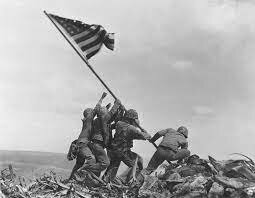 The Battle of Iwo Jima was an epic military campaign between the U.S. Marines and the Imperial Army of Japan in early 1945. American forces invaded the island on February 19, 1945, and the ensuing Battle of Iwo Jima lasted five weeks. In some of the bloodiest fighting of World War II, it’s believed that all but 200 or so of the 21,000 Japanese forces on the island were killed, as were almost 7,000 Marines.
The Battle of Iwo Jima was an epic military campaign between the U.S. Marines and the Imperial Army of Japan in early 1945. American forces invaded the island on February 19, 1945, and the ensuing Battle of Iwo Jima lasted five weeks. In some of the bloodiest fighting of World War II, it’s believed that all but 200 or so of the 21,000 Japanese forces on the island were killed, as were almost 7,000 Marines. -
 On Victory in Europe Day or V-E Day, Germany unconditionally surrendered its military forces to the Allies, including the United States. On May 8, 1945 - known as Victory in Europe Day or V-E Day - celebrations erupted around the world to mark the end of World War II in Europe.
On Victory in Europe Day or V-E Day, Germany unconditionally surrendered its military forces to the Allies, including the United States. On May 8, 1945 - known as Victory in Europe Day or V-E Day - celebrations erupted around the world to mark the end of World War II in Europe. -
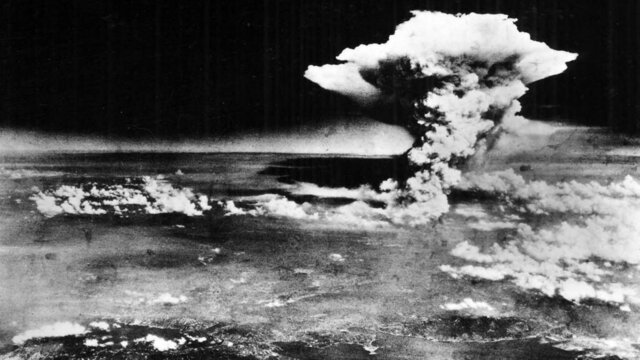 When were the atomic bombs dropped on Hiroshima and Nagasaki? The first atomic bomb, named Little Boy, was dropped on Hiroshima by the Enola Gay, a B-29 bomber, at 8:15 AM on August 6, 1945. The second bomb, named Fat Man, was dropped on Nagasaki from the Bockscar, also a B-29 bomber, at 11:02 AM on August 9, 1945.
When were the atomic bombs dropped on Hiroshima and Nagasaki? The first atomic bomb, named Little Boy, was dropped on Hiroshima by the Enola Gay, a B-29 bomber, at 8:15 AM on August 6, 1945. The second bomb, named Fat Man, was dropped on Nagasaki from the Bockscar, also a B-29 bomber, at 11:02 AM on August 9, 1945. -
 V-J Day, or Victory over Japan Day, marks the end of World War II, one of the deadliest and most destructive wars in history. When President Harry S. Truman announced on Aug. 14, 1945, that Japan had surrendered unconditionally, war-weary citizens around the world erupted in celebration.
V-J Day, or Victory over Japan Day, marks the end of World War II, one of the deadliest and most destructive wars in history. When President Harry S. Truman announced on Aug. 14, 1945, that Japan had surrendered unconditionally, war-weary citizens around the world erupted in celebration. -
 Called “the greatest American battle of the war” by Winston Churchill, the Battle of the Bulge in the Ardennes region of Belgium was Adolf Hitler’s last major offensive in World War II against the Western Front. Hitler’s aim was to split the Allies in their drive toward Germany. The German troops’ failure to divide Britain, France and America with the Ardennes offensive paved the way to victory for the allies.
Called “the greatest American battle of the war” by Winston Churchill, the Battle of the Bulge in the Ardennes region of Belgium was Adolf Hitler’s last major offensive in World War II against the Western Front. Hitler’s aim was to split the Allies in their drive toward Germany. The German troops’ failure to divide Britain, France and America with the Ardennes offensive paved the way to victory for the allies.